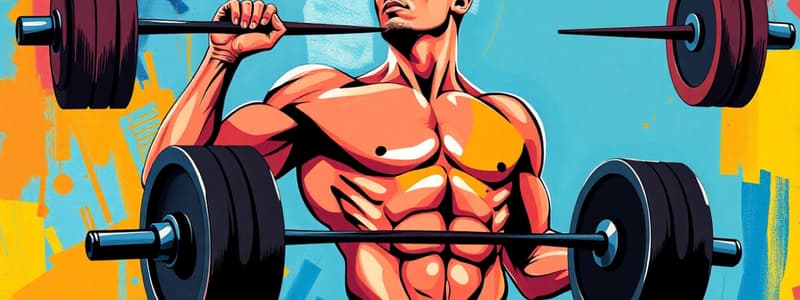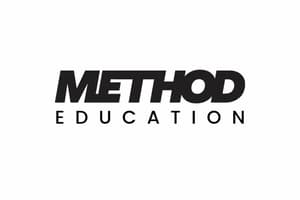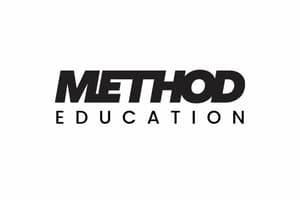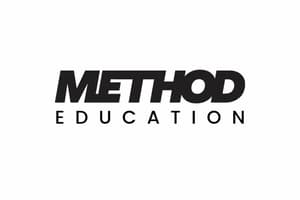Podcast
Questions and Answers
What is the primary role of the leg muscles when lifting a bar off the floor, according to the text?
What is the primary role of the leg muscles when lifting a bar off the floor, according to the text?
- To provide the primary force for lifting. (correct)
- To stabilize the back.
- To prevent knee injuries.
- To maintain balance.
Which of the following techniques helps avoid excessive strain on the lower back when lifting a bar off of the floor?
Which of the following techniques helps avoid excessive strain on the lower back when lifting a bar off of the floor?
- Using only the arms to lift the bar.
- Keeping the bar away from the body.
- Rounding the back during the upward pull.
- Keeping the bar close to the body and the back flat. (correct)
When is it typically recommended to use one or more spotters, according to the text?
When is it typically recommended to use one or more spotters, according to the text?
- During all power exercises.
- During exercises where a bar moves over the head, is positioned on the back, racked on the front of the shoulders, or passes over the face. (correct)
- During exercises performed with dumbbells.
- During any free weight exercise.
For which exercises is an alternated grip typically used by the spotter to pick up the bar and return it to the floor?
For which exercises is an alternated grip typically used by the spotter to pick up the bar and return it to the floor?
What type of grip is recommended for spotting the bar during a triceps extension or barbell pullover?
What type of grip is recommended for spotting the bar during a triceps extension or barbell pullover?
Where should a spotter primarily focus their grip when spotting dumbbell exercises, according to the text?
Where should a spotter primarily focus their grip when spotting dumbbell exercises, according to the text?
Where should overhead exercises, and exercises with a bar on the back or front shoulders, ideally be performed?
Where should overhead exercises, and exercises with a bar on the back or front shoulders, ideally be performed?
What type of injury can be the result of performing out-of-the-rack exercises with heavy weights?
What type of injury can be the result of performing out-of-the-rack exercises with heavy weights?
Flashcards
Barbell Lifting Technique
Barbell Lifting Technique
The proper positioning of your feet and back when lifting a barbell off the floor, enabling efficient use of leg muscles and minimizing lower back strain.
Deadlift
Deadlift
A type of exercise that involves lifting a weighted barbell off the floor, keeping the back straight, and lifting with the legs.
Barbell on the Back
Barbell on the Back
A form of exercise where a barbell is positioned across the shoulders, typically for exercises like squats and bench press.
Over-the-Face Exercise
Over-the-Face Exercise
Signup and view all the flashcards
Spotter
Spotter
Signup and view all the flashcards
Free Weight Exercise
Free Weight Exercise
Signup and view all the flashcards
Alternated Grip
Alternated Grip
Signup and view all the flashcards
Power Rack
Power Rack
Signup and view all the flashcards
Study Notes
Lifting & Spotting Free Weights
- Lifting a bar off the floor involves proper foot and back positioning to utilize leg muscles effectively.
- Keeping the bar close to the body and a flat back during the lift minimizes strain on the lower back.
- This same technique is applied to deadlifts and other power lifts initially.
Exercise Technique Fundamentals
- The technique for lifting a bar off the floor uses leg muscles for major contribution.
- Maintaining the bar close to the body, and keeping a flat back avoids excessive strain on the lower back during the upward pull.
Spotting Free Weight Exercises
- Except for power exercises, exercises involving the bar over the head, back, or shoulders typically require one or more spotters.
- Spotters are crucial in over-the-face exercises, providing support and returning the bar to its initial starting position. Grips should be adjusted depending on the exercise.
- Supporting the weight on the forearms, near the wrist, is recommended for over-the-face dumbbell exercises.
- Spotting heavy lifts needs a solid base of support and a flat back position from the spotter.
- Avoid supporting exercises by pressing on the elbows. Avoid spotting dumbbell exercises by pressing on elbows, instead supporting the weight by gripping the dumbbell itself
- For overhead dumbbell tricep extensions, spotting is performed by gripping the dumbbell.
Spotting Overhead Exercises and Those With the Bar on the Back or Front Shoulders
- Perform these exercises in a power rack for added safety.
- The rack's crossbars should be set at a suitable height.
- Ensure the lifter, spotters, and others nearby are safe.
- Avoid out-of-the-rack movements with heavy weights without experienced professionals present and proper training. Avoid step-ups or lunges without the right spotters.
Types of Exercises Performed and Equipment Involved - Power Exercises
- Avoid spotting power exercises.
- If the bar becomes uncontrolled, advise the athlete to step out of the way.
- The number of spotters depends on the weight, experience of the lifter and spotters.
- Clear communication between the lifter and spotter is vital.
- Details like the use of a liftoff, amount and timing of spotting assistance, should be discussed and agreed upon in advance.
Review Questions
- Students need to describe proper spotting techniques for various lifts.
- Additional tips and strategies for spotting specific lifts are necessary.
Studying That Suits You
Use AI to generate personalized quizzes and flashcards to suit your learning preferences.




